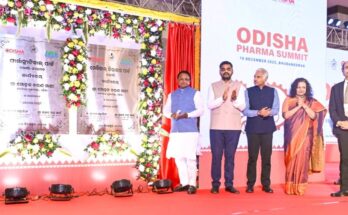Samikhsya Bureau
After Union finance minister Arun Jaitley hinted that the February 1 Interim Budget would be more than a mere Vote on Account, the industries and many corporate are expecting that it would definitely bring some amazing announcements.
Health industry is hoping that this time the government would focus on expanding insurance to middle class along with the lower strata of society to allow access to super specialty healthcare in order to strengthen the medical insurance across the country.
Jaypee Hospital CEO Dr Manoj Luthra said over the past few years, the Indian healthcare sector has begun a major overhaul in order to attain Prime Minister Narendra Modi’s goal of healthcare for all. Not only are governmental institutions involved but corporate and private hospitals have come forward to be a part of the initiative.
The government, he said, may increase allocation of funds to be able to make a significant change in healthcare delivery to all sections of society.
“The government needs to focus on increasing the viability of various preventive and treatment programmes. Preventive health programmes can help in early diagnosis and timely treatment and will result in lowering the burden on secondary and tertiary care facilities. More doctors and healthcare staff at various levels will have to be hired to achieve the mission of universal healthcare,” he added
Dr Luthra said despite introduction of health insurance schemes, overall coverage and penetration is still low. The government should focus on expanding insurance to middle class along with the lower strata of society to allow access to super speciality healthcare. The sector is expecting that medical insurance coverage in the country will be strengthened.
Digital and other advances in technology need to be harnessed through specific budget allocations. High cost of imported medical devices is a challenge and hence, there is need to give incentives to device and medical industry which will not only encourage government’s ‘Make in India’ initiative but will also reduce the monetary burden of the patients.
In healthcare industry, SRL Diagnostics CEO Arindam Haldar said as Prime Minister Narendra Modi promised that the government would double its public health spending to 2.5 per cent of gross domestic product (GDP) by 2025 from 1.15 per cent at present, all eyes are on the healthcare sector.
The last year has been a challenging one for India’s private healthcare providers, with multiple headwinds impacting growth and profitability. The overall sector has become less attractive for investments without which growth gets hindered significantly. Even the existing players are slowing down their capex plans. However, given that more than two-thirds of the sector is driven by private operators, the government has to increase its willingness to partner with the private sector players. The ambitious PMJAY scheme (Ayushman Bharat) holds a lot of promise and has the right intent, but he said for this government authorities have to take the right partnership approach to broad base participation.
On tax side, the Society of Indian Automobile Manufacturers deputy director general Sugato Sen said, the Union Budget covered only customs duty and direct tax as excise and service tax had been subsumed in GST and handled by the GST Council. So, SIAM has suggested that for CBU of cars and two-wheelers, rates should remain at the same level. But, for commercial vehicles CBUs, rates should be increased from 25 per cent to 40 per cent, which is the bound rate committed by India in WTO.
However, 40 per cent rate should not be applicable to CKD and SKD. On the direct tax front, SIAM would like to suggest that the weighted deduction of research and development expenses should be brought back to 200 per cent as it was before, since the direct tax rates have not been reduced as originally outlined by Jaitley while linking the two.
Textile company Filatex said in the budget, they expect that custom duty on polyester filament yarn (PFY) and polyester staple fibre (PSF) would be increased from 5 to 10 per cent.
Filatex chairman and MD Madhu Sudhan Bhageria said the textile has 18 per cent GST on raw material and 12 per cent GST on finished product. Corporate tax is very high, this comes to almost 35 per cent after all surcharges so they expect it to be brought down to 25 per cent as stated by the then Jaitley in 2014.
He said individual IT slabs should be rationalised to 10 per cent for income group of Rs 4 lakh to 8 lakh, 20 per cent for income above Rs 8 lakh to 15 lakh and 30 per cent for income levels above Rs 15 lakh.
He, however, said if the government thinks that income up to Rs 8 lakh qualifies for economically backward. Then, it may exempt tax of people that have income up to Rs 8 lakh.
India’s first converged payments solution company Razorpay co-founder Harshil Matur said with the upcoming budget, they want the government addresses problems being faced by startups over taxes levied on angel funds. Secondly, considering how UPI is being embraced by businesses and consumers which is resulting in larger transaction volumes and increased P2M adoption, it will be good if the government starts taking steps towards making UPI the de-facto mode for all online payments soon.
He added that it is also important for the government to recognise the immense potential that Fintech lenders hold in furthering financial inclusion and credit penetration and should encourage them with prudent policies to benefit the sector.




